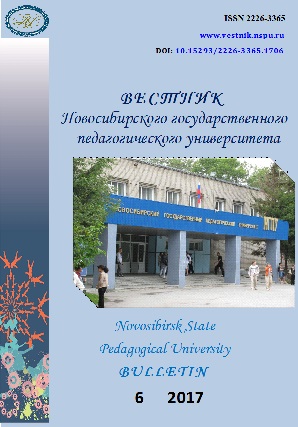Миграция населения в городских поселениях Западной Сибири в 1980-е гг.
Migration of population in urban settlements of Western Siberia in 1980-s
Author(s): Victoria Vasilyevna Lygdenova, Odon Borisovich DashinamzhilovSubject(s): Demography and human biology, Migration Studies
Published by: Новосибирский государственный педагогический университет
Keywords: Migrations; Urbanization; Urban population; Western Siberia; Demographic development; Historical demography; Ethnical demography; History of Siberia
Summary/Abstract: Introduction. The present research is significant due to the need for analyzing areal movements of population in the cities of Western Siberia in conditions of inter-republican migration flows’ transformation when balance of migration in the Soviet Union became positive since 1970-s. The authors consider the development of society and economy in Western Siberia in 1980-s when the biggest oil-gas complex was being built. The purpose of the article is to observe the influence of migrations on urbanization transition dynamics in Western Siberia. The authors address a wide range of demographic processes in the cities in 1980-s which have not been researched before. Materials and Methods. For this study, A. S. Senyavskyy’s Methodology is applied. It is based on the theory of urbanization transition; the extensive and intensive factors are differentiated. The intensive factor is characterized by the reduction of the urban population’s number and its significance, decreasing sizes of migration from rural areas and growth of movements between cities, shortening the number of administrative transformations and outrunning growth of population in the biggest urban settlements and agglomerations. Results. According to the purpose and the problem of the study, the authors conducted the analysis of resource data of migration rates in Western Siberia as a whole, and a range of administrative unities and categories of urban settlements, in particular, during the considered period, which enables to reveal peculiarities of urban transition in the economic region. Conclusions. Previous studies have not dealt with a range of aspects of migration movements in cities in 1980-s, which have been addressed in this article. As a result, the following conclusions are made: opposite to the Russian Soviet Federative Socialist Republic, where the sizes of migration inflow to urban settlements and their role in the growth of urban population decreased, Western Siberia was the only economic region of the republic, where the volume of areal movements increased. Developing of Western Siberian Oil and Gas Mining Complex (ZSNGK) contributed to attractiveness of Western Siberian cities, as well as transformed migration flows according to urban settlements categories. In the end, it had a great impact on the development of urban transition in Western Siberia – annual average growth rate of the urban population number increased, share of middle and small towns in the population also grew.
Journal: Вестник Новосибирского государственного педагогического университета
- Issue Year: 7/2017
- Issue No: 6
- Page Range: 175-193
- Page Count: 19
- Language: Russian

